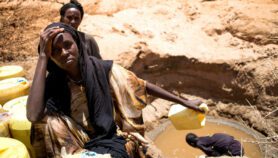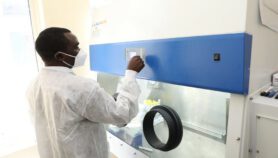Send to a friend
The details you provide on this page will not be used to send unsolicited email, and will not be sold to a 3rd party. See privacy policy.
[MEXICO CITY] The scientific community in Mexico is rapidly aging owing to an absence of programmes that engage young scientists in research, compounded by a lack of retirement incentives for their veteran counterparts.
Less than one quarter of the 9,000 members of the National Research System (SNI) – which brings together some of the leading scientists in Mexico – are under 40, while 35 per cent are over 50 years of age.
“We are losing the young people that we have put so much into educating,” says Ana María Cetto, general secretary of the International Council of Scientific Unions and general director of the Technical Cooperation Department of the International Atomic Energy Agency.
“We have a new generation of highly trained scientists, but they are not being incorporated into research activities. We are letting them go instead of retaining them and offering them jobs.”
Cetto says that this will be reflected over the next few years in a large-scale loss of continuity in the country’s scientific activities.
A key factor in this state of affairs is the lack of jobs for young scientists. “I have looked for work at various Mexican universities, but I haven’t found any; nor are there vacancies for researchers with companies,” says 31-year-old Juan Alberto Osorio, who, in the next few days, will obtain his PhD in plant biotechnology from the Centre for Research and Advanced Studies (CINVESTAV) in Mexico City. At present, Osorio only has two options: to embark on post-doctorate studies or to work overseas.
“The most productive stage in a scientist’s life is thought to occur between the ages of 25 and 45,” says 34-year-old Mauricio Terrones, who works at the Potosino Institute for Scientific and Technological Research. “This means that we should be encouraging people of that age to conduct quality science in Mexico. But we do not have the means to incorporate them into the country’s body of researchers.” Terrones, who won the UNESCO award for young researchers in 2001, also stresses the importance of creating retirement programmes for older scientists in order to generate openings in the employment market.
Luis Álvarez, 38, from the Department of Genetics and Molecular Biology at CINVESTAV notes that one of the most serious problems in the Mexican science system is that young researchers are expected to have the same production capacity as their more experienced colleagues. “But they cannot work in the same manner as more experienced researchers,” he says. “And even if young people were contracted, there would be no place to put them as no new institutions have been created.”
An example of this is the department in which Álvarez works at CINVESTAV, one of the most prestigious research centres in Latin America, where not a single new member of staff has been hired in four years.
“There are large numbers of veterans in the SNI and CINVESTAV, but they won’t leave their jobs until they die,” adds Álvarez. “They do not need to be productive as they have young researchers under their tutelage and the infrastructure to carry out research, which creates a parasitic relationship between older and younger scientists.” In other words, after working for a few years for an older researcher, the young researcher’s line of study becomes that of their more experienced counterpart.
“If researchers accept these conditions, they may progress quickly. But if they don’t, they will run into many problems, as the older researchers are the very same people who assess projects at the National Council on Science and Technology (CONACYT) and SNI,” he adds.
Álvarez, who has three international patents for his work, points out that extra support should be given to young researchers to help them set up their own laboratories, which require both time and money before they can begin to be productive.
Scientists over 50 years of age absorb 44 per cent of SNI resources, while researchers between 30 and 39 years of age receive only 16 per cent of its budget.
A similarly gloomy picture is found in the slow growth of the overall number of scientists in Mexico. It took almost 20 years for Mexico’s scientific base to increase from 4,500 researchers to the current 9,000. Furthermore, only 1,000 PhD-holders graduate each year, compared to 6,000 graduates a year in Brazil.
But the Mexican government appears to be out of touch with this reality. In its 2001-2006 Special Science and Technology Program, the government set a goal of 30,000 SNI members and 50,000 doctoral graduates by 2006 – a target which seems unattainable to most Mexican scientists.
“On the one hand, there is the problem of the old scientists leaving, and on the other, the entry of young scientists,” says Pablo Rudomín, coordinator of the President’s Consultative Council on Science. “There is a tendency toward older age groups within the SNI, and many young people who obtain PhDs leave the country.”
Rudomín agrees that there are no adequate retirement programmes, nor is there an effective policy to recruit young people and provide them with reasonable support. He also recognises that scientific research is simply not as attractive to younger generations as other disciplines.
“We should make the most of our highly experienced researchers, as wisdom is often as important as productivity,” stresses Rudomín. “But scientific progress requires a constant infusion of new blood as knowledge changes continuously.”













